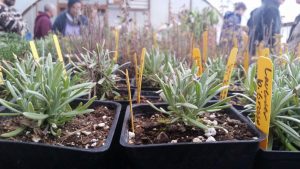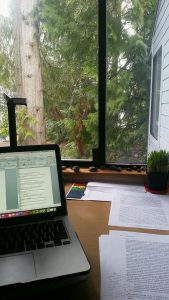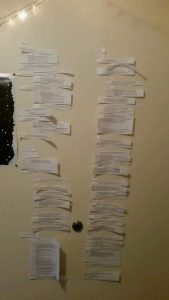Update!
This was a busy week. I was in a bit of a panic after not getting much work done for my project. The good news is that I had a bunch of activities scheduled that would take up some log hours and lead to some productivity with my final paper. Here’s a quick look into my week:
On Sunday, I ended up finding Rachel Laudan’s writing and I spent over six hours looking at her blog and reading her articles from the past decade. I was really interested in her writing because she is a food historian and had a lot to say about the myth of authenticity and is very critical of the Slow Food Movement. While reading her work, I kept on getting sidetracked by other writers and soon enough, I had spent an entire day reading critiques of slow and local food.
Here is the link to her blog: http://www.rachellaudan.com/
This article struck me in particular. https://drive.google.com/file/d/0B9HbgKDkUrDEM2NjOThkZjAtYTUyNS00NDYxLWI0NDMtMDUwYzcwODQyOWY1/view?ddrp=1&authkey=CP2XufED&hl=en#
I am a fan on the way that Laudan writes, however, I did not necessarily agree with what she wrote in A Plea for Culinary Modernism: Why We Should Love New, Fast, Processed Food. Her recount of food history is phenomenal and I am continually compelled by the words she uses; however from the beginning, we have different understandings on the basis of slow foodie politics. She writes, “That food should be fresh and natural has become an article of faith” and seems to negate the intentions of Slow Food advocates to be out of Luddism. The rest of the article proceeds to tell the history of processed and canned foods around the world and the revolution of taste that occurred because of such. Laudan argues that foodies are against this history and are privileged to think that they can procure all their food from their local environment. However, from my own perceptions and my own scholarship, I would argue that this is a very generalized case. I don’t believe that Slow Food advocates have any issue with canning and fermenting foods, and are in no way abandoning taste for environmental consciousness. There is a balance between the two without criticizing all slow food lovers of being Luddites. The historical trade of recipes and spices has opened a new kind of connection that people can experience tastes from far away while still using the majority of ingredients from their own regions.

On Thursday, I attended the last practical farm workshop with Dave’s SOS. We went to work in the heated green house after a short lecture on divisions and cuttings. Beth had collected stem cuttings from a variety of plants around the farm for us to practice making divisions. After cutting the stems in three to 12 inch pieces, we dipped them in a willow tea and then placed them in a contained of perlite (making certain that at least one node was covered with perlite). After a week or so, hopefully the cuttings will have started to make roots and after those roots are strong enough, they can be replanted in soil. We also made cuttings with soft wood and herbaceous plants. The pictures that I have are from the herbaceous cuttings.
Here is a list of common rooting media:
- Half sand/half peat moss
- Half sand/half vermiculite
- Half perlite/half vermiculite
Dave also mentioned another method for rooting where you fill a container with peat moss at the bottom and add a mixture of vermiculite, perculite, and sand on top of that. The point of this is that the roots get to where the moisture is without attracting mold. A plastic tent can then be placed over the container for high humidity and mist-ers work to occasionally spray plants.


On Saturday, I volunteered at the Art of Giving Fundraiser in Tacoma at Hotel Murano. I helped out as a bid recorder and during the live auction, recorded bidder numbers and final prices. One of the items was the Farm to Table dinner that will be hosted at the Organic Farm on September 9th. The final price was set at $175 and there were about 20 people who bought tickets.
Overall, this was a fun event to attend and got me more excited about editing the first proof of concept of the Organic Farm biodynamic calendar this spring. My hope is that by September, there will be at least one completed season ready for print. And, if Archer, Annie, and Daniel are still interested, could be given away as a gift for the Farm to Table participants.

Throughout this week, I also finished my outline for my final paper. This is always the most exhausting part of writing for me and it wasn’t better this time around given that I have read over 60 articles and books this quarter. I finally got it done, and taped all of the quotes I am using up on my bedroom wall. I am looking forward to being done with this paper; it’s been a long quarter!

